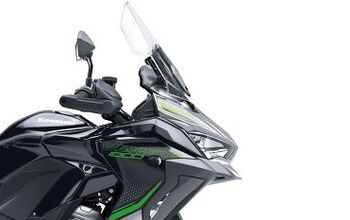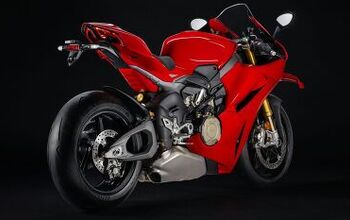Borile B500CR - Motorcycle.com
Near Venezia, Italy, April 26, 2001 -- It was the late John Britten who was once asked why, of all things, did he choose to build a motorcycle. It has to be remembered that the guy was a successful land developer, an architect and a glass craftsman. "Because it is not too big a project," was his answer. And indeed, coming to think of it, all you need to build a bike is really a good tube bending machine, a lathe, a milling machine and a pair of extremely co-ordinated hands.
Umberto Borile must have thought along the same lines. The guy lives
The bike that I saw there, two years ago, was so unlike anything else on show. It was as if somebody had read my mind and produced my ideal Sunday morning ride. Even if you hadn't been raised on a steady diet of British singles (like me) you'll have a hard time resisting the simple and honest allure of a svelte, sharp and agile road-going single that is loaded with cool retro looks. Instinctively, I grabbed a catalog and business card, knowing that some day I would certainly want to examine Umberto's work more closely.
Exactly one year after the Milan show I decided to phone Umberto, just to see how was his project coming along. As it turned out, I couldn't have chosen a better time to call.
Making Contact "So when are you coming?" came Umberto's reply. Surprise, surprise. The bike is up and running and I am going to be the first journo to test it.Umberto's "factory" is as charming as the beautiful surroundings. The driving directions led me to the front of a small bike dealership. Until Umberto's project really gets off the ground his income still depends on selling KTMs to the area's inhabitants. But the true jewels are in the workshop area behind the showroom. Beautiful British classics in all stages of restoration; Rows of ready-for-installation Borile engines and, of course, a few prototypes of his own machine, the Borile B500CR. With such museum pieces lying around, there is little wonder that the Borile has turned out to be so full of nostalgia in its lines.
Umberto is quick to point that, although the lines of his B500CR are indeniably classic in nature, there is nothing old about the 500 c.c. single that powers his creation. OK, so bending tubes to form a new frame is kind of understandable, but creating a whole new engine? Umberto chose a smart way to get the powerful and lightweight engine he wanted for his thumper. Using the cylinder head, cylinder, piston and crankshaft from the GM speedway engine, he got around the problem of developing a totally new engine from scratch.
If you are not familiar with the GM engine, do not worry. Unless you follow speedway racing closely, there is little chance that you might have heard about it. Italy's GM have been producing world championship wining engines for a few decades. Speedway engines are known for a truly wide powerband, needed to power slide bikes around oval tracks while having a nice 60-plus horsepower available on the top end. The only problems facing Umberto before using this engine were the lack of a proper oiling system or gearbox.
The frame is a big part of the Borile's visual impact, too. In the best Italian tradition, it is an interesting mix of engineering reasoning and emotional decisions expressed with shinny aluminum tubes. Or, in other words, a modern day interpretation of how a BSA Gold Star would look if it were produced today. The frame is basically a single cradle affair with the down-tube splitting under the engine. Screwed to its back is a minimalist (you will hear the term often from now on) rear subframe, a monoshock rear suspension and an aluminum swingarm with notable bracing. And what are those odd-looking side tubes, you might ask? Umberto replies with his heart, "well, they do add some rigidity, but above all, I like their looks." Umberto may be a motorcycle producer, but he is also very romantic about his handicraft.
More by Yossef Schvetz






























Comments
Join the conversation